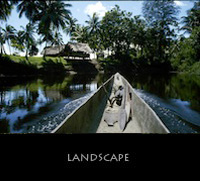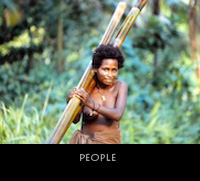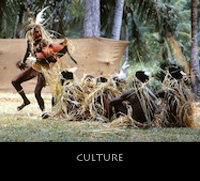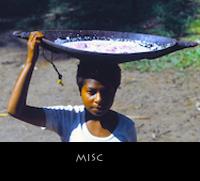Fieldphotos - Ramu
Ramu
There is a diversity of ethnic groups who settle on the banks of the Ramu River and in the adjacent lowlands and foothills, such as the Rao, Breri, Igana,
Kominimung and Romkun, Most of them speak different languages. There is no institutionalized traditional organisation above village level.
The inhabitants of each village are an independantly acting unit, though trade and other relations connect villages with each other. Most traditional houses
had roofs extended to the gound but today family houses are built on posts. Sago and fish provide the staple food for the people of the Ramu Lowlands.
Also yam, taro, sugar cane, greens, and bananas are grown in the gardens. Occasionally wild pigs and crocodiles are hunted and speared.
The religious activities of the Ramu people were centered around the belief in ancestral spirits.
The Ramu area is one of the most culturally diverse regions of Papua New Guinea. Its exciting visual art, particularly woodcarving, is internationally renown.
The centre of every village was the men's ceremonial house or Haus Tambaran as it is called in pidgin.
In contrast to the Sepik region, the traditional men's houses in the Ramu area have collapsed not so long ago. The Ramu people have produced a
rich variety of fine woodcarvings such as figures and masks embodying mythical ancestors, eating bowls, fighting shields, handdrums, big slit gongs
with sculpted ends, dugout canoes with elaborately carved bows depicting masks and crocodile heads and many more. Even the canoe paddles have
designs carved in relief or painted designs on the blade. Some of the masks
are attached to a towering basketry headdress embellished with feathers,
flowers, leaves and shell ornaments. Such mask costumes are worn by initiated men representing mythical ancestors in the yam harvest ceremonies.
In ceremonies and dances men and women wear a great variety of body ornaments made of shell, dog teeth and pig tusks.



